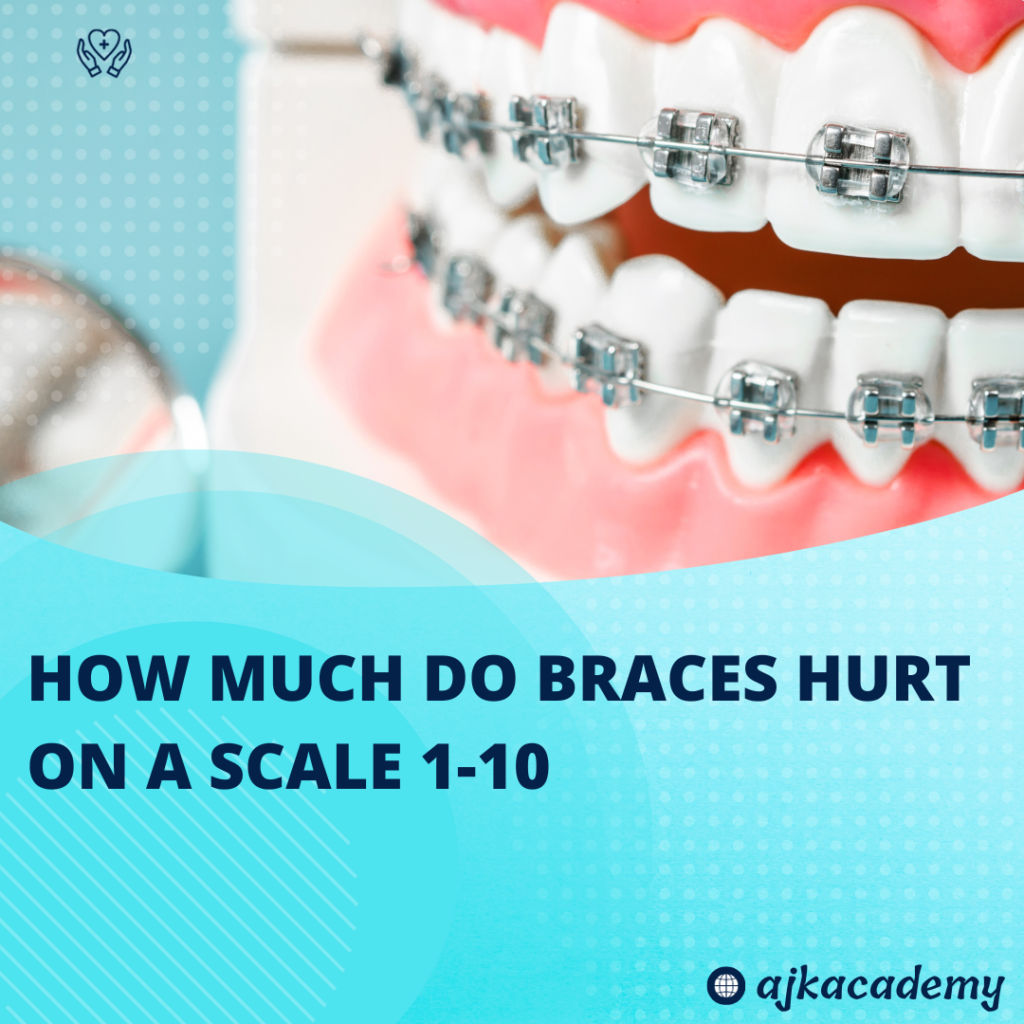Braces have become synonymous with achieving a dazzling smile, but the journey to that perfect set of pearly whites often comes with a fair share of discomfort. If you’re considering braces or currently wearing them, you’ve likely wondered, “How much do braces hurt on a scale of 1-10?” Let’s delve into this common concern and explore the various facets of braces pain.

Introduction
Getting braces is a significant decision—one that prompts a myriad of questions, with the level of discomfort being a primary concern. The experience of braces pain is subjective and varies among individuals. Understanding the factors influencing this pain is crucial for those embarking on the orthodontic journey.
Understanding the Basics of Braces
Braces are orthodontic devices designed to correct misalignments in teeth. They consist of brackets, wires, and bands working together to gradually shift teeth into the desired position. The purpose of braces extends beyond aesthetics, encompassing improved oral health and functionality.
Factors Influencing Braces Pain
The perception of pain is subjective and influenced by various factors. These include an individual’s pain tolerance, the type of braces used, and the complexity of the orthodontic case. While some may experience minimal discomfort, others might find the pain more pronounced.
Initial Discomfort: Days after Getting Braces
The days following the placement of braces are often associated with the highest level of discomfort. The pressure exerted on the teeth and gums during this initial phase can result in soreness, making eating and speaking a bit challenging. However, this discomfort is temporary and can be managed effectively.
Routine Adjustments: Managing Pain Over Time
As your orthodontic treatment progresses, routine adjustments will be necessary to continue the alignment process. While these adjustments may cause some discomfort, it is typically less intense than the initial phase. Consistent communication with your orthodontist can help manage pain levels during these appointments.
Different Types of Braces and Pain Comparisons
The type of braces chosen can also impact the degree of pain experienced. Traditional metal braces may cause more initial discomfort compared to newer alternatives like clear aligners. It’s essential to weigh the pros and cons of each type concerning both effectiveness and pain.
Tips for Alleviating Braces Pain
Managing braces pain involves adopting proactive measures. Maintaining a proper oral hygiene routine, using orthodontic wax for irritation, and consuming softer foods during initial phases are simple yet effective ways to alleviate discomfort.
Real-life Experiences: Stories from Braces Wearers
Understanding that everyone’s pain threshold is different, it’s enlightening to hear real-life stories from individuals who have undergone orthodontic treatment. Some may describe the pain as a mere inconvenience, while others may recall moments of acute discomfort.
The Psychological Aspect: Dealing with Braces Pain
Beyond the physical discomfort, there’s a psychological aspect to braces pain. Staying positive and focused on the end goal can significantly impact how one perceives and copes with the temporary discomfort associated with braces.
Alternative Solutions for Pain Relief
While over-the-counter pain relievers can provide relief, exploring non-medical alternatives like cold compresses and orthodontic-friendly numbing gels can be beneficial. It’s essential to follow professional advice and not self-prescribe medications.

Comparative Pain Analysis: Braces vs. Other Dental Procedures
For those unfamiliar with orthodontic procedures, comparing braces pain to other common dental treatments can provide context. Understanding that discomfort is a temporary part of the journey may alleviate anxiety for individuals considering braces.
Debunking Myths: Separating Fact from Fiction
Misconceptions about braces pain abound. Addressing these myths, such as the belief that braces are excruciatingly painful throughout the entire treatment, helps individuals approach their orthodontic journey with realistic expectations.
Long-term Benefits: Is the Pain Worth It?
As the saying goes, “no pain, no gain.” While braces may cause temporary discomfort, the long-term benefits, including a confident smile and improved oral health, far outweigh the initial challenges. Keeping the end goal in mind can help individuals persevere through moments of discomfort.
Parental Concerns: Managing Children’s Braces Pain
Parents of children undergoing orthodontic treatment may have additional concerns. Creating a supportive environment, actively listening to children’s experiences, and collaborating with the orthodontic team can make the process more manageable for both parents and children.
